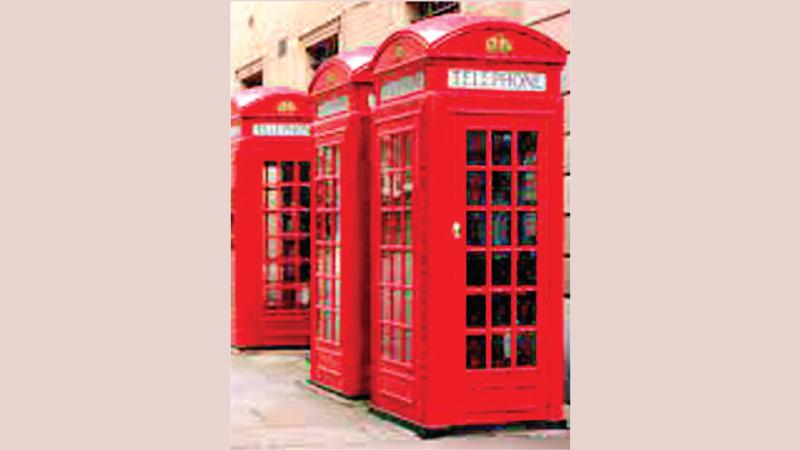
Over the past decade, the demand for public telephones has been declining fast due to the use of mobile phones among almost everyone, regardless of age. Therefore, it is safe to say that the use of pay telephones and telephone booths, which are operated with coins, is gradually coming to an end.
In the decade following Alexander Graham Bell’s invention of the telephone in 1876, pay phones became so popular that even those who could not afford to buy a phone could make affordable phone calls. This article is about the birth and spread of pay phones and telephone booths in an era of them seeing a gradual demise.
Although not so common in Sri Lanka, pay phones and telephone booths are still common in the United States and Europe, especially in the United Kingdom (UK).
Developed countries
However, many developed countries are currently working to remove pay phones from their booths and replace them with modern communications equipment, such as Wi-Fi towers with touch screens.
Public phones were first seen in telephone company offices in the early 1880s, allowing the consumer to make calls after paying the phone operator. Named ‘Fernsprech Kiosk’, the world’s first telephone booth was set up in Potsdamer Platz Square in Berlin on 12 January, 1881. To use it, one had to get a piece of printed paper called ‘Telefonbillet’ and after showing it to the phone operator, the customer was given a limited time of a few minutes to make a call.
In 1889, William Gray, an American living in Connecticut, introduced the world of coin-operated pay phones. Considered to be the first pay phone to be used without a phone operator, it was installed in a bank in Hartford, and unlike the pay phones we see today, coins had to be put in this when the phone call was over.
Gray worked to create an easy-to-use phone for anyone without a lengthy explanation to the owner or operator of the phone, following an unfortunate incident.
Ailing wife
In 1888 he needed to get a doctor to examine his ailing wife, and since he did not have a personal phone, he went to the factory on the street corner, but as he was not a subscriber to the telephone company, the factory owner did not allow him to use the phone. The need was so strong that Gray had to beg to be allowed to use it, and the factory owner finally gave him a chance to make a phone call.
In 1891, Gray founded the Gray Telephone Pay Station Company, which undertook to install pay phones in poles and small booths along the road.
It was during this time that cells were designed to protect pay phones from the weather, which soon became popular in the United States. Gray, who continued to work on improving his invention, had reportedly acquired more than 20 patents for paid phone-related inventions. Statistics show that there are currently over 2 million paid phones in the United States.
Very popular
In addition, Gray’s company and Western Electric Company Limited had taken the lead in introducing prepaid pay phones instead of paying cash after making the call. Introduced as ‘The 1911 Model 50A’, the coin operated pay phone became very popular, and just within two years, a total of 25,000 of the said model were installed in New York City alone.
Pay phones were then introduced to the UK at the beginning of the 20th century, and the red telephone booths still found in London were introduced to that country in 1921. The ‘K2’ model was designed by Sir Giles Gilbert Scott in 1924 as the ‘K1’ model was relatively small in size. It goes without saying that the ‘K2’ model provided the basis for all subsequent red phone booths designed in the UK.
